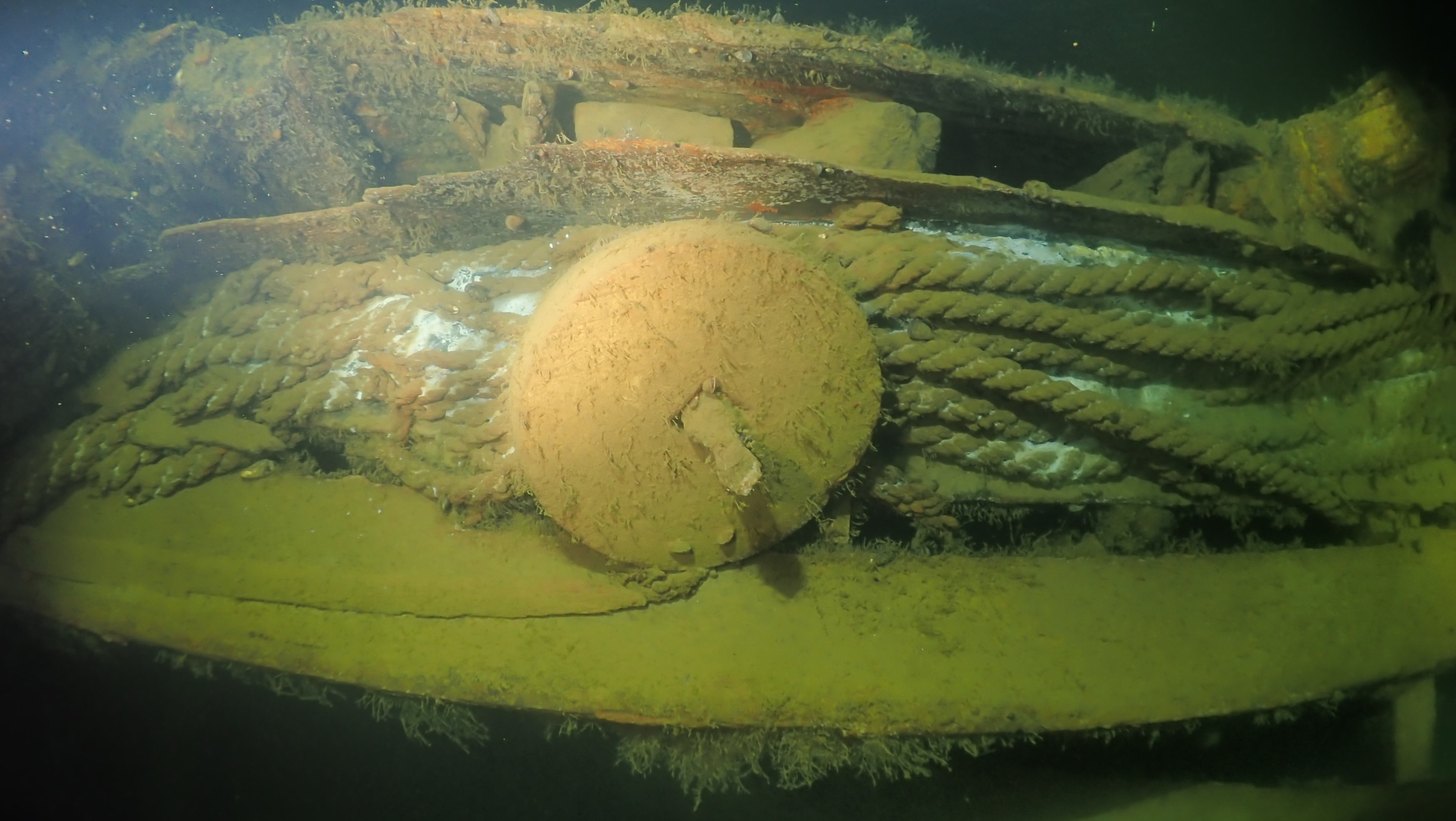
Borstö 1
The site is in the Archipelago Sea, approximately 3.5 nautical miles south of the village of Borstö in the former municipality of Nauvo. The wreck has a protected area designated under the Finnish Environment Institute's Antiquities Act since 1999. Diving and anchoring within the protected area are not allowed without a permit from the National Board of Antiquities. The location of the wreck is within the Archipelago Sea National Park.
The wreck is the remains of a sailboat, around 25 meters long and 6 meters wide, and holds significant cultural-historical value. The hull is well-preserved. The vessel was a caravel-type three-masted ship made of oak. The lower parts of the masts are still standing. The wreck was discovered in the 1950s based on information provided by fishermen.
For a long time, the wreck was believed to be a ship named St. Michel (St. Mikael in Finnish). In Nauvo, the contents of a washed-up chest were auctioned in Turku in 1748. The chest had likely fallen into the sea in the autumn of 1747, and its contents indicated that it came from a foreign trading vessel. The wreck at Borstö was found to contain items such as horse carriages and various luxury goods, including pocket watches, snuffboxes, and porcelain. Several newspaper articles were written about the wreck, which gained a reputation as a treasure ship. In the early 1970s, Dr. Christian Ahlström studied archival sources and found a letter dated December 4, 1747, in the Danish Customs archives of the Sound Dues, requesting the reimbursement of the customs duty for the horse carriages. He also found a customs document related to the vessel, listing valuable cargo. Based on these documents and the objects found on the wreck, it was assumed that the wreck was the Russian-flagged ship St. Michel. Several field studies have been conducted on the wreck between the early 1960s and the 1990s. The artifacts recovered from the wreck during these studies are now part of the collections of the National Museum/Finnish Maritime Museum, and some of them are on display at the main exhibition of the Finnish Maritime Museum in the Vellamo Maritime Center in Kotka. In 2005, a book titled "S:t Mikael 1747" was published about the wreck, along with articles (see additional information). After archival investigations conducted in the 2010s (by Riikka Alvik and Yrjö Kaukiainen), the identification of the wreck has changed, and there is no information about the ship's name. Instead of coming from the Netherlands past the Sound Customs, the ship might have been coming from some Baltic Sea port, like Lübeck.